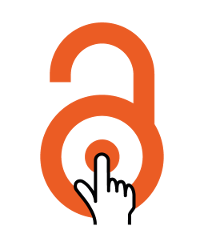 On Tuesday last week, a brand new version of the Open Access Button was launched. Here, we get the lowdown on the new features and the team’s plans for the future from one of the founders of the Button – David Carroll.
On Tuesday last week, a brand new version of the Open Access Button was launched. Here, we get the lowdown on the new features and the team’s plans for the future from one of the founders of the Button – David Carroll.
If you are reading this, I’m guessing that you are a student, researcher, innovator, or just someone interested in learning about the latest research. You may be doing incredible work, writing a manuscript or presentation, or just have a burning desire to know everything about anything. In this case I know that you are also denied access to the research you need by pages asking you to pay up to $40 for one piece of research. This happens to me too, all the time, but we can do better. This is why we started the Open Access Button.
Last week, at an event in London, we released the new Open Access Button, which you can download from openaccessbutton.org. The next time you’re asked to pay to access academic research, push the Open Access Button on your phone or on the web. The Open Access Button will search the web for a version of the paper that you can access. The apps work by harnessing the power of search engines, research repositories, automatic contact with authors, and other strategies to track down the papers that are available and present them to the user – even if they are using a mobile device.
If you get your research, you can make progress with your work. If you don’t get your research, your story will be used to help change the publishing system so it doesn’t happen again. If users don’t get access to the research they need, we add the unavailable research to a users wishlist. Through this we aim to help make a copy of the research available by using a few different strategies. To name just one, we email the author of the research and ask them to make a copy of the research available into already established repositories (facilitating “Green Open Access”), and once they do we’ll automatically send it to everyone who needs it.
Our new apps build upon a successful beta released last November that attracted thousands of users from across the world and drew lots of media attention. These could not have been built without a dedicated volunteer team of students and young researchers, and the invaluable help of a borderless community responsible for designing, building and funding the development.
Unfortunately the Open Access Button can only do so much, and isn’t a perfect or long term solution to this problem. Alongside supporting users, we will start using the data and the stories collected by the Open Access Button to help make the changes required to really solve this issue.
We’ll be running campaigns and supporting grassroots advocates with this at openaccessbutton.org/action, as well as building a dedicated data platform for advocates to use our data. If you go there you now you can see the ready-to-be-filled map, and your first action, to sign our petition – this petition in support of Diego Gomez, a student who faces 8 years in prison and a huge monetary fine for doing something citizens do everyday, sharing research online for those who cannot access it.
What was released last week is the platform for the future, the Open Access Button is now built in a scalable and sustainable way, which will allow it to grow, adapt and improve. Backed by the core elements of the technology, and the continued support of the community our potential to do cool new things is greater now than ever. Stay tuned over the next few months for what is coming next. Until then, there are still exciting opportunities for you to make a difference, you just have to push the Button.
The Open Access Button is available now at openaccessbutton.org.
Comments